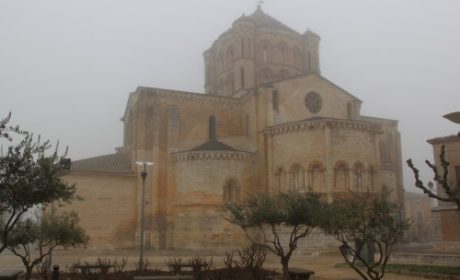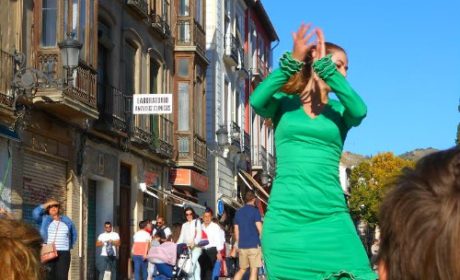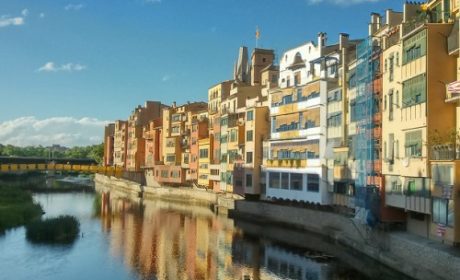As you know, My Itchy Travel Feet readers love traveling to Spain. Recently, we showed you how to spend an active weekend in Seville. But nowhere did we mention flamenco, a dance the city is famous for. But we’ve fixed that! Guest contributor, Kirsten Gallagher, is here to share her experience dancing flamenco in Seville. Dance lessons anyone?
Looking for a place to stay in Seville, Spain? Start your search for hotels in Seville with us!
It’s important to me that when I travel I not only see things but do things. On my recent trip to Spain, I decided to learn about dancing flamenco in Seville. Located in Andalusia, Seville is famous for flamenco, a ferocious style of dance with gypsy roots but now inextricably linked to the cultural heritage of Spain. The art form has received special UNESCO recognition as one of the Masterpieces of the Oral and Intangible Heritage of Humanity.
Dancing flamenco in Seville
To experience Spain’s culture through dance, I planned a full day of flamenco: I would take a private flamenco lesson in the morning and then attend a performance by professional flamenco artists at night at Casa de la Memoria.

There are several studios for learning flamenco in Seville. The elegant city is filled with glorious centuries-old churches and monument-filled squares—and flamecno dance studios. I chose Juan Polvillo (Calle Sol, 84). Having neither the appropriate shoes nor an excess of time to find some for rent, I appreciated being able to simply borrow a pair from the studio. Upon arrival, the owner Juan Polvillo himself welcomed and graciously offered me a faldita (familiar Spanish for little skirt) before leading me to a tickle trunk full of shoes. Once I was outfitted with flamenco skirt and footwear, Juan introduced me to Marta, a lovely young lady with dark eyes, who would instruct the class and bear witness to my best efforts at stomping my feet while trying to appear serious.

As we walked through the studio, I could see, or rather, hear a group class taking place due to the unmistakeable galloping noise created by a multitude of heavy heels. Watching it for a moment, I appreciated how flamenco, unlike many other styles of dance, attracts women of all ages, of all shapes and sizes. Aesthetics seem to matter less in flamenco. A woman does not have to possess “a dancer’s body” to be able to give a sublime flamenco performance. Of course, she must be capable of executing the movements with precise timing and technique, but it is her personal expression that gives the performance real texture. Later, I asked one of the participants why she chose to dance flamenco. I thought she might say something about it being a good workout (which it is, as I later learned). Instead, she replied, “Me ayuda expresarme.” (“It helps me express myself.)
Marta started the class with some very simple movements, such as hitting the ground first with the ball of the foot, followed quickly by the heel (toe, heel, toe, heel…). She taught me how to simultaneously coordinate upper body movement. What struck me straightaway about flamenco is not just that the dancer must coordinate the upper and lower body, nor that she must move them independently, but that the style of movement is markedly different between them. What I mean is that while the upper body moves slowly and sensuously, the fingers working away intricately, like smoke coiling through the air, the lower body is angrily keeping the rhythm with sharp strikes against the ground. Flamenco is delicate and powerful at the same time.

Marta taught me some simple combinations that we practiced and repeated to the music. She also incorporated sections in which I could improvise a little (I particularly liked it when I slowly turned on the spot while dramatically raising my arms out to the sides and then up overhead, rotating my wrists and extending my fingers). Of course, in the span of an hour, it isn’t realistic to expect to be able to launch a professional dance career, but I enjoyed the lesson immensely and I gained a deeper appreciation of the difficulty of the style.
Watching professional flamenco in Seville
Later that night, I headed to Casa de la Memoria (Calle Cuna, 6), one of the more respected venues for flamenco shows in Seville, and known to feature up-and-comers on the flamenco scene. It’s located in the heart of Seville, not far from an eye-catching architectural work carved from wood overhanging Plaza La Encarnación. Locals refer to the work as las setas, or the mushrooms, because of its wavy and sponge-like appearance, but it officially goes by the name Metropol Parasol.

On most nights, Casa de le Memoria offers two shows (19:30 and 21:00, €18—approximately $21.71). It’s an intimate space with seating on the ground level and in the balcony. Performers are few: there is one female dancer, one male dancer, a singer and a guitarist. The show started with offstage clapping which grew louder and louder as the performers made their way to the stage. The guitarist took his seat and calmly improvised for a few minutes to lull the audience into quiet attention. The singer, who is thought by many to be the true centre of the performance, appeared soon thereafter, weaving his voice slowly through the room like a ribbon.

The stage looked worn and for good reason. The dancers held nothing back as they hit the boards aggressively with their thunderous feet. The female dancer, wore a pained expression on her face as she stomped, clapped and snapped, whipping herself around to face one way and then, in a split second, the other. Watching her fingers, which were so extended that they almost appeared to bend backwards, I remembered how Marta had explained to me during the lesson that one of the differences between female and male dancers is that the female dancers’ fingers articulate while the males’ are held closely together. The two dancers danced together several times, alternating grabbing the focus of the show, until seeming exhaustion.
If you like the sound of a night like this (and you should!), between Madrid and the south of Spain, there are about as many flamenco shows as there are tapas. I recommend taking one in, and for those who are up for something more, trying a flamenco lesson. Though I did a private lesson, group lessons geared at tourists are also widely available. ¡Vamos!
Planning a trip to Spain? Start your research at our Spain Travel Resources page.
Save to Pinterest
Disclosure: Affiliate links are included for your convenience. However My Itchy Travel Feet receives a small percentage of the sale at no additional cost to you. Thanks for your business!




